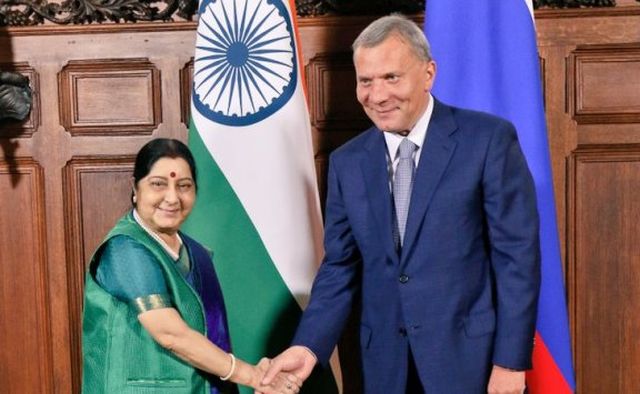
by admin | May 25, 2021 | Corporate, Corporate finance, Corporate Governance, Finance, Investing, News, Politics
 Moscow : India and Russia have set a new two-way investment target of $50 billion by 2025 following a meeting between Indian External Affairs Minister Sushma Swaraj and Russian Deputy Prime Minister Yury Borisov here on Friday during which bilateral cooperation across various sectors was reviewed.
Moscow : India and Russia have set a new two-way investment target of $50 billion by 2025 following a meeting between Indian External Affairs Minister Sushma Swaraj and Russian Deputy Prime Minister Yury Borisov here on Friday during which bilateral cooperation across various sectors was reviewed.
Addressing the media after co-chairing with Borisov the 23rd India-Russia Inter-Governmental Commission on Technical and Economic Cooperation (IRIGC-TEC), Sushma Swaraj said in 2017, the annual trade between India and Russia reached $10.17 billion.
“We discussed ways and means to increase this momentum, ensure balanced trade and remove barriers to trade,” she said.
“Two-way investments have already crossed the $30-billion target, which we had set for 2025.
“We have therefore proposed that we enhance this figure to $50 billion by 2025.”
IRIGC-TEC is a standing body which annually meets and reviews ongoing activities of bilateral cooperation.
The Commission, after taking stock of bilateral cooperation in various fields, provides policy recommendations and directions in the fields concerned.
Friday’s meeting prepared the groundwork for the annual India-Russia bilateral summit between Indian Prime Minister Narendra Modi and Russian President Vladimir Putin, to be held in New Delhi next month.
Russia is one of only two countries with which India holds annual bilateral summits, the other being Japan.
The India-Russia bilateral relationship was elevated to Special and Privileged Strategic Partnership in 2010.
Modi and Putin have already met twice this year — at an informal summit in the Russian resort city of Sochi in May and then on the sidelines of the BRICS (Brazil, Russia, India, China and South Africa) Summit in South Africa in June.
In her address, Sushma Swaraj said in the IRIGC-TEC meeting, both sides discussed the possibilities of working together on projects in third countries as a new dimension of the strategic partnership.
Pointing out that there has been significant expansion in cultural and tourism exchanges, she said: “Tourism flows in both directions has shown impressive growth. We are working on further liberalising visa regulations on both sides.”
In this connection, she also welcomed the initiative of the Russian government to enable electronic visas for Indian nationals visiting the Russia “far east”.
With energy being traditional area of cooperation, Sushma Swaraj said that earlier this year the first shipment of liquefied natural gas (LNG) from Russia reached India “in a new breakthrough of our energy partnership”.
“We have identified new areas of cooperation such as agriculture, infrastructure, transport and science and technology,” she said.
“We would like to expand our cooperation in the area of space.”
The Indian Minister also said that both sides have agreed to organise the first-ever India-Russia Business Summit involving major companies from both countries in early October in India.
Soon after her arrival here on Thursday, Sushma Swaraj met Russian Foreign Minister Sergey Lavrov and according to Indian External Affairs Ministry spokesperson Raveesh Kumar, both leaders had a good exchange of views on bilateral and regional issues.
—IANS
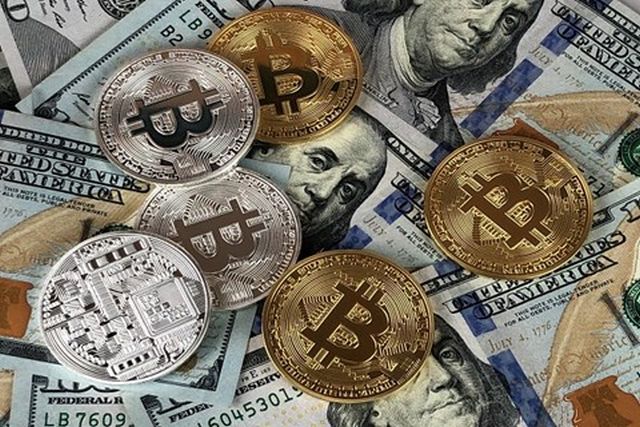
by admin | May 25, 2021 | Opinions
 By Rahul Agarwal,
By Rahul Agarwal,
In this age of instant gratification — especially among the young and salaried (Gen Y) individuals — buying a big budget item is almost hassle-free. They can easily be bought with little to no down payment and banks and other financial firms line up with attractive offers and EMIs that are sometimes too hard to ignore.
However, to reach an objective conclusion between the choice of saving now to buy a big budget asset later, over buying something right away on EMIs, one needs to evaluate various pros and cons regarding the purchase.
First and foremost is the differentiation between want and need: If you want something, then, in most cases, you have the luxury of time to plan and save for the same; on the other hand, if the item you are planning on buying is an actual and immediate need, then buying the item upfront with cash or financing it’s purchase and paying an EMI is a feasible option.
Besides the fact that buying an asset through loans increases your indebtness, there are other important factors or situations that occur due to buying on loans:
Added financial obligation: Financing through EMI results in creating long-term debt and commitments which, if not honored, can cause problems.
Extra cost to be paid: Every EMI has two parts, principle and the interest; the interest part is extra cost that one has to pay to own an asset. The longer the duration of the loan, the higher is the cost of acquisition of the asset.
Opportunity cost: Owning an asset through financing does entail an opportunity cost in the form of the interest one pays in owning the asset. In doing that, one forgoes the opportunity to invest the same amount and earn interest and generate income
Losing financial freedom: Having to pay a certain amount every month towards an existing EMI leads to loss in financial freedom; not paying or delaying payments leads to fines and fees and negatively impacts one’s credit history, thereby restricting access to credit in the future or during emergencies. Once in debt, all the financial planning for one’s free cash flow after basic expenses is focused on first paying of the debt, therefore restricting one’s legroom for making financial decisions.
The economic sense to buy an asset only after saving for it, rather than buying it through a loan, can be better understood through an example. The basic assumption is that the big budget item that one is planning on buying is not an immediate need and the buyer has at-least two to three years to plan and save for the purchase.
It can thus be seen that the effective cost that one pays through the EMI route is almost 30 per cent higher than the scenario in which one first saves and then buys. The primary reason for this difference is that in the first cast one is spending money as interest on the loan whereas in the second case one is accruing interest thereby reducing his/her cost of acquisition.
The example clearly establishes that saving first and then buying a big-ticket item is always a better option as opposed to taking a loan and buying it right away.
One, of course, will be denied the pleasure of instant gratification and would have to wait to own the asset; but at the same time, the savings thus realised are significant and can be used to buy a smaller item or can be used for other productive purposes at zero upfront cost. This further reinforces the fact that postponing expenses creates wealth, whereas advancing the date of their purchase leads to erosion of wealth. This basic personal finance tip can help individuals build long-term wealth through small steps.
(Rahul Agarwal is Director Wealth Discovery/EZ Wealth. The views expressed are personal)
—IANS
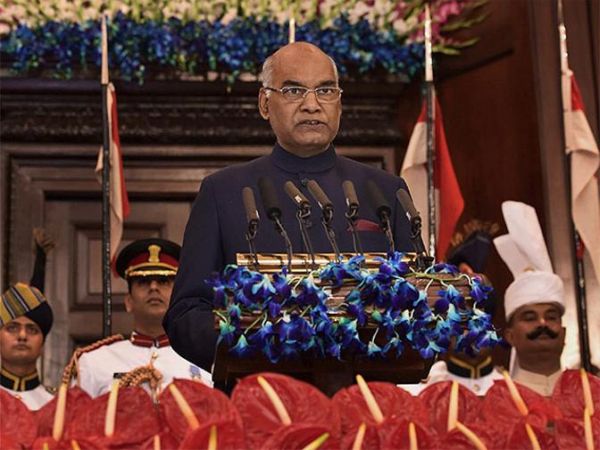
by admin | May 25, 2021 | Corporate, Corporate finance, Corporate Governance, Economy, Finance, Investing, News, Politics

Ram Nath Kovind
Nicosia : An anti-money laundering memorandum of understanding (MoU) signed between India and Cyprus will help boost investment cross-flows between the two countries, President Ram Nath Kovind said here on Monday.
“We welcome the signing of the MoU between Financial Intelligence Unit, India, and the Unit for Combating Money Laundering of Cyprus,” Kovind said while addressing the media after a bilateral meeting with Cyprus President Nicos Anastasiades.
“This agreement would further strengthen the institutional framework to facilitate investment cross-flows,” he said.
Cyprus is the eighth largest investor in India with a cumulative investment of around $9.2 billion.
“We also emphasised that the revision in the Double Taxation Avoidance Agreement made in 2016 provided greater opportunities for our investment partnership to grow,” Kovind said.
Stating that he and President Anastasiades held detailed discussions on the way forward for bilateral long-standing and excellent relations, Kovind said: “We reviewed our ongoing bilateral and multilateral engagements and discussed issues of regional and global concern.”
Apart from the agreement on combating money laundering, India and Cyprus also signed an agreement on cooperation in the field of environment.
Kovind said that he and Anastasiades called for enhancing business collaboration in the fields of IT and IT-enabled services, tourism, shipping and renewable energy.
The Indian President thanked Anastasiades for his “express support for an early adoption of the India-initiated Comprehensive Convention on International Terrorism (CCIT) at the UN.
“I thanked Cyprus for extending support for India’s permanent membership of the UN Security Council,” Kovind said.
“I also expressed our gratitude to Cyprus for extending continued and strong support to India for its membership of the Nuclear Suppliers Group and help us move on clean energy pathway.”
Kovind arrived here on Sunday on the first leg of his eight-day three-nation tour of Central Europe that will also see him visiting Bulgaria and the Czech Republic.
His visit comes in the wake of Anastasiades’s visit to India in April last year.
—IANS
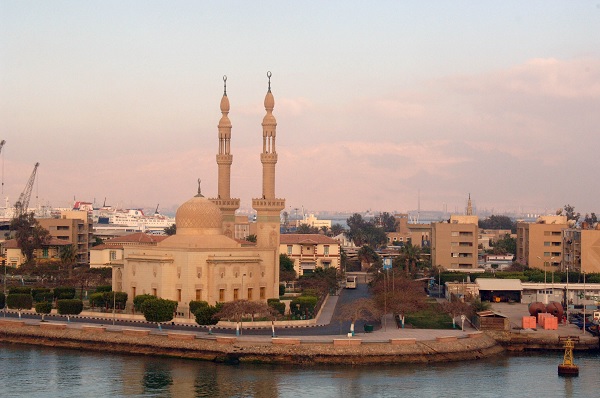
by admin | May 25, 2021 | Investing, Muslim World
 Cairo: Egypt plans to allocate $15.4 billion to carry out investment projects in the restive Sinai Peninsula, the country’s planning minister said Tuesday.
Cairo: Egypt plans to allocate $15.4 billion to carry out investment projects in the restive Sinai Peninsula, the country’s planning minister said Tuesday.
“There is a high priority for development of the Sinai Peninsula and Upper Egypt,” Hala al-Saeed said in a statement.
Al-Saeed said fish farms are planned to be established in Sinai, as well as building roads, housing units, hospitals, schools and a university.
The minister, however, did not give any details about the sources of funding for the planned Sinai projects.
Sinai has remained the epicenter of a deadly militant insurgency since mid-2013 when Mohamed Morsi — Egypt’s first freely-elected president and a Muslim Brotherhood leader — was ousted in a military coup.
Since then, hundreds of Egyptian security personnel have been killed in militant attacks across the volatile peninsula.
—AA
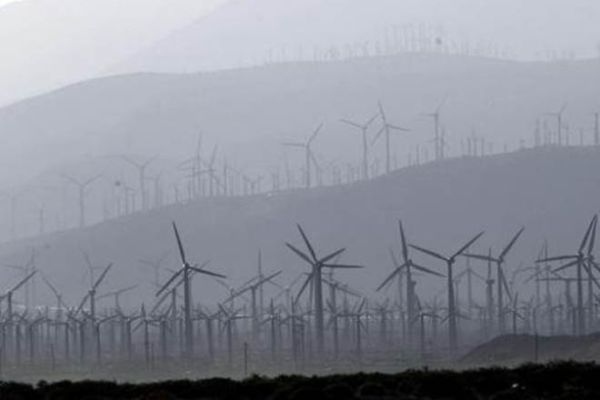
by admin | May 25, 2021 | Business, Commodity Market, Economy, Investing, Markets, Medium Enterprise, News
 New Delhi : China’s investment in foreign wind-powered electricity markets has surpassed $12 billion in Europe and Australia alone as private and state-owned Chinese companies move aggressively to capitalise on fast-growing renewable energy markets, the Institute for Energy Economics and Financial Analysis (IEEFA) said on Thursday.
New Delhi : China’s investment in foreign wind-powered electricity markets has surpassed $12 billion in Europe and Australia alone as private and state-owned Chinese companies move aggressively to capitalise on fast-growing renewable energy markets, the Institute for Energy Economics and Financial Analysis (IEEFA) said on Thursday.
Most of the wind investment activity has been in Europe.
“China is now a driver of the European energy transformation and its international leadership in low emissions sectors of the future are entirely aligned with efforts to increase China’s global economic influence,” Sydney-based IEEFA analyst Simon Nicholas said.
“While Chinese foreign renewable energy investments were boosted by the launch five years ago of its Belt and Road Initiative (BRI), its foreign renewable energy investment now extends well beyond that framework.
“This is a superpower taking its energy policy global,” Nicholas said.
IEEFA’s research brief says China’s foreign renewable energy investments have increased as a result of the country’s pan-Asian Belt and Road Initiative (BRI), but the majority of these investments are not in BRI countries.
Interestingly, in BRI countries and in non-BRI developing countries, China continues to build coal-fired power projects as opportunities for domestic coal projects dry up.
The brief builds on an IEEFA paper published in January that described how China has become a leading global renewable energy investor “defying an overall slowdown in Chinese overseas investment as the country further positioned itself to dominate in new energy technologies such as batteries and electric vehicles”.
That report put China’s 2017 investment in new energy technology and resources at $44 billion, up from $32 billion in 2016.
In 2017, the Chinese government began restructuring its power-generation sector in an effort to reduce reliance on coal and exported China’s renewable energy technology while continuing to promote its coal technology in foreign developing markets.
Chinese foreign energy investment from 2003 to 2017 was dominated by hydro and coal-fired power, with wind and solar coming to the fore more recently by way of technology gains, efficiency improvements and dramatic declines in cost.
The briefing notes, however, that while Chinese wind and solar investment goes well beyond the BRI to developed nations, coal-fired power activity remains high within the BRI and in other developing countries.
“From 2003 to 2017, the majority of China’s foreign power investments in Southeast Asia went to hydro ($45 billion) and coal ($12 billion) projects, amounts significantly higher than Chinese wind investment in the European Union ($6.8 billion) and Australia ($5 billion).
“Although this trend is influenced by the fact that wind and solar investment has ramped up only within the last few years, it is clear that Chinese coal power investment is restricted more to the BRI and to developing countries.
The brief includes notes on Chinese companies that include China General Nuclear, China Resources Power, China Shenhua Group, China Three Gorges, State Development and Investment Corp, China Huadian Corp, and China Huaneng Group.
The US-based IEEFA conducts global research and analyses on financial and economic issues related to energy and the environment.
—IANS

 Moscow : India and Russia have set a new two-way investment target of $50 billion by 2025 following a meeting between Indian External Affairs Minister Sushma Swaraj and Russian Deputy Prime Minister Yury Borisov here on Friday during which bilateral cooperation across various sectors was reviewed.
Moscow : India and Russia have set a new two-way investment target of $50 billion by 2025 following a meeting between Indian External Affairs Minister Sushma Swaraj and Russian Deputy Prime Minister Yury Borisov here on Friday during which bilateral cooperation across various sectors was reviewed.



